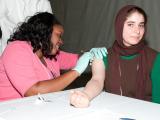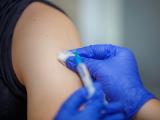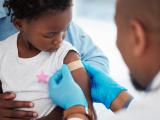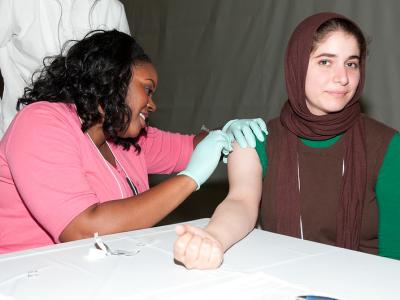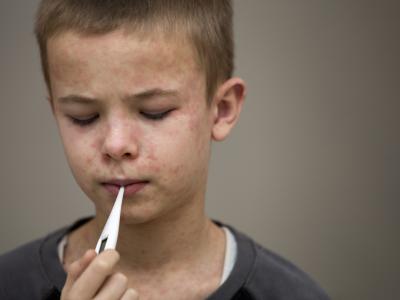Apr 5, 2012
CDC: Flu outbreak in two Maine prisons showed need for preparedness
An influenza outbreak at a pair of neighboring state prisons in Maine last year sickened 46 inmates and staff members and killed one inmate, pointing up the need to offer flu vaccine to prison populations and take other precautions, according to the US Centers for Disease Prevention and Control (CDC) today. The outbreak in March 2011 struck a medium- to maximum-security prison housing up to 916 inmates and a minimum-security facility with room for 112, the CDC said in Morbidity and Mortality Weekly Report. The facilities are on separate campuses but share some staff members. The 46 cases included a 29-year-old man who died and a 55-year-old man who was treated in an intensive care unit. The day after the younger man died, 40 prisoners in the larger facility and several in the smaller one reported respiratory symptoms. In response to the outbreak, the prisons were closed to new admissions and transfers, and prison physicians, aided by state public health nurses, screened and offered vaccination and antiviral drugs to about 1,000 prisoners and 200 staff members. A lack of electronic medical records made it very difficult to quickly determine which inmates had been vaccinated and which ones had comorbidities that put them at risk for severe flu. Noting that flu can spread rapidly in prisons, the CDC said correctional facilities should strongly consider offering flu vaccination to all inmates and staff each year, documenting their vaccination status, and educating them on respiratory etiquette.
Apr 6 MMWR article
Spain reports nursing home flu outbreaks despite high vaccination rates
Spanish scientists, writing today in Eurosurveillance, report three H3N2 outbreaks in separate nursing homes in Navarre this year that occurred in residents who had an 82% to 97% flu vaccination rate. Attack rates of influenza-like illness (ILI) in each home were 2.9% (15/523, all but 4 of whom had been vaccinated), 18% (4/22, all vaccinated), and 67% (44/66, all but 2 of whom were vaccinated). Those homes had vaccination coverage rates of 82%, 91%, and 97%, respectively. Of the 63 ILI case-patients, 23 were swabbed, and, of those nasopharyngeal samples, 13 (57%) were positive for H3N2 flu. The authors write, "The design and the size of the study were not adequate to obtain estimates of the vaccine effectiveness. However, the high attack rate in vaccinated persons and the number of vaccine failures suggest reduced vaccine protection in these nursing homes." They underscore the importance of hygiene measures and early outbreak detection.
Apr 5 Eurosurveill report

